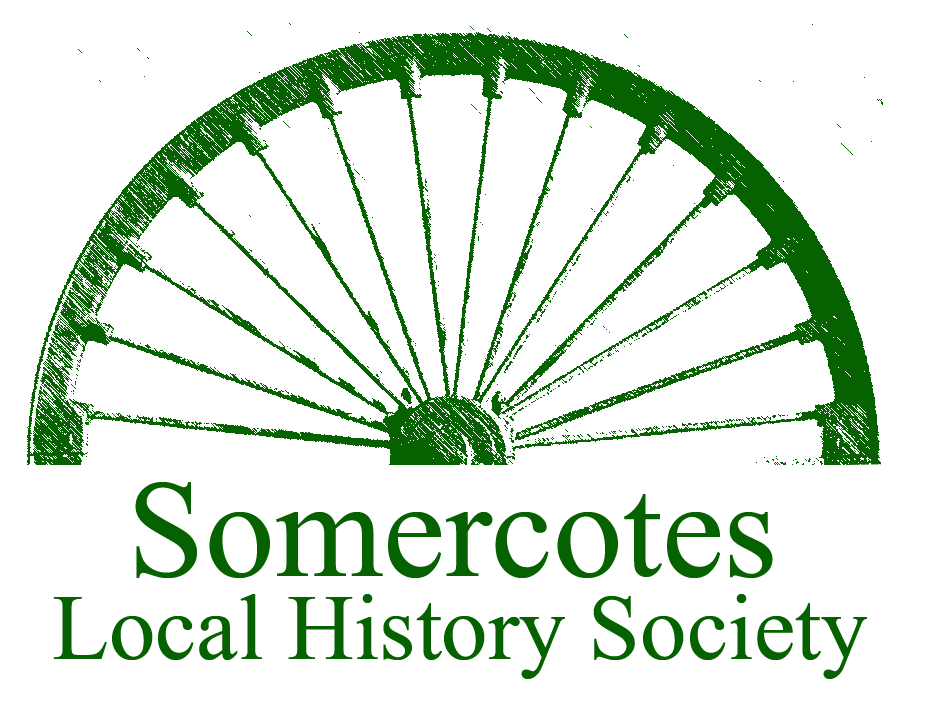






Pye Bridge Station - The Goat Story
by David Kirk and Betty O'Neil on
Wednesday 26 June 2019
INTRODUCTION - BY DAVID KIRK
The story below recounts a hilarious happening at Pye Bridge Station when I was employed there as a Booking and Parcels Clerk in the mid 1950's.This was when the railways were classed as "common carriers" and by law had to accept almost anything for conveyance. This was revoked a few years later. Just imagine this happening today! I was at Pye Bridge station from September 1954 to May 1956 when I was called up for National Service. On release I returned to work for BR and I was the last Stationmaster at Pye Hill station in 1962 up to closure at the end of year. The picture has been kindly done for me by Betty O'Neil also of Ilkeston. I hope that you find it of interest, it is an unusual story and I think it was worth passing over to you. David Kirk.
PYE BRIDGE STATION - THE GOAT STORY
I was appointed to the position of Booking and Parcels clerk at Pye Bridge station in September 1954 when I was 3 months short of my 17th birthday and I remained there until I was called for National Service in the Royal Army Pay Corps in May 1956. It was a 2 shift job, early turn from 0700 and late turn from 1300 and my colleague on the other shift was Mr Ted Denslow who lived at Selston and who had been amongst the troops evacuated from the beaches of Dunkirk in 1940. The principal duties were issuing tickets for the train services, dealing with passenger enquiries, dealing with forwarded and received parcels traffic, there was also internal office work in connection with calculation of staff pay, payment arrangements each week, and other correspondence. The parcels side was always busy with customers bringing parcels for despatch and collecting parcels which had arrived. In 1954 and early 1955 the railways were classed as “Common Carriers” which was a relic from Victorian days but it meant that the railways had to accept almost anything for despatch on the system. This was changed by decree in either late 1955 or early 1956. The story that follows is before this major change.
I was on the early turn at the station one morning when I saw a small road van arrive outside the parcels office, the van was owned by “Pooleys” who provided weighing machines, weighbridges etc for the railways. The driver came in and told me that he had brought the new weighing machine for the parcels office and he needed to set it up. This he did, it was of a type which I had not seen before but he explained and demonstrated to me how it was to be operated, tested me on my operation and after he was satisfied he then gave me a fairly large stiff card which set out all the details as previously explained to me. He said that it needed to be displayed on the wall behind the weighing machine so that any staff could read this and operate the machine in accordance with the instructions. After he had gone I attached this thick card to a nail in the wall in the designated place.
Shortly after all of this, I had my first customer. It was a farmer or one of his employees who walked up the road leading a goat on a rope. He brought it into the parcels office and told me that it was to go to Clay Cross on the next train. This was no problem, the goat would travel in the guard’s van and would be handed over to the station staff at Clay Cross on arrival. It was of course necessary to raise the carriage charge for this and this meant that the goat needed to be weighed. This was easier said than done as it meant that the goat had to be positioned on the weigh platform and it was in no way interested in that. Matters were not helped by me helplessly laughing at our combined efforts to manoeuvre the goat’s legs onto the platform, we were both pulling and tugging, I was laughing and the farmer was blaspheming(probably at me as well as the goat). After what seemed a long time we finally managed to get the goat positioned and I stepped forward to operate the machine. I checked on the instructions which I had posted earlier on the wall only to see the last vestige of them in the goat’s mouth which he was chewing so very happily. However, I managed to weigh the goat, attach a parcel stamp to the label and off it went on its way. I was left with the new weighing machine and no operating instructions. A few hours later, my relief, Mr Denslow arrived and I demonstrated the new machine to him. He said “where are the instructions” and of course I had to tell him that the goat had eaten them. His reply was totally unprintable. To complete this little story, a couple of years ago I visited the Great Central Railway at Loughborough and there on the platform I saw an identical weighing machine on display. It brought it all back to me to see this on display.
